On flow
Good Morning! It feels like it’s been a while. However, I was only away for two weeks. Last week, I was busy writing an extensive article on opportunities and challenges of cyberpsychology for social change, hence why I was quiet here. I am so attuned to Nature that it feels like I was away for two seasons. You see, we had our “day of snow” here in Bristol, so it feels like a lot happened in Nature in the last fourteen days.
First, the snow came and covered everything for a day. Our resident magpies and my dog loved it – and ended up playing in the snow all morning. People always smile and step into their softness, which feels so comforting. The collective levels of anger are rising due to the economic crisis; people hardly smile these days in my neighbourhood…so it was nice to have a day of rest. As the snow covers everything, somehow, it also covers all our worries. The white roots in our street blend in with the skies, and every little snowflake brings calmness and awe. Snow brings our playfulness, so watching the dogs, children and parents play in the park lifts my mood.
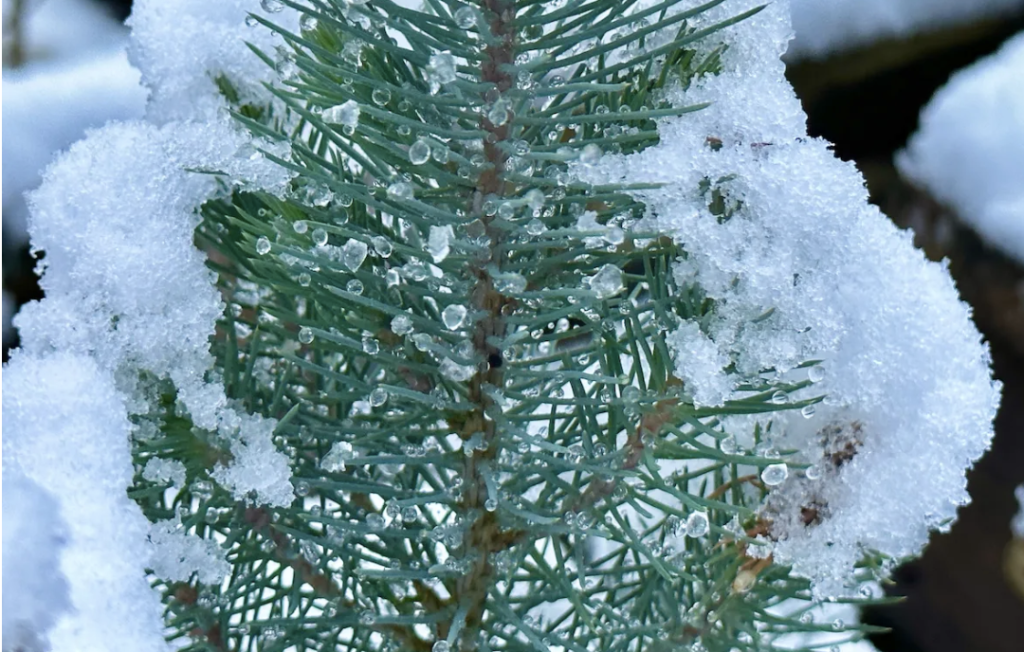
The snow melted the next day, leaving us humans with puddles. But all the neighbourhood birds – two packs of crows, two pairs of magpies, crowds of seagulls of different types – landed on the park lawn hunting for emerging worms. I have never seen so many birds enjoying such a feast in one play!
The low temperatures lasted for about a week, and now the spring is coming back. To my Nature-clock, all this feels sudden! I am glad to see my daffodils open up finally – they were so shy, awaiting the cold. I love how the daisies collect water in the shapes of little ponds. Our muscari blooms finally take over the front garden in waves of colour. And my first camelia flower opened up – isn’t she stunning! All this in two weeks!
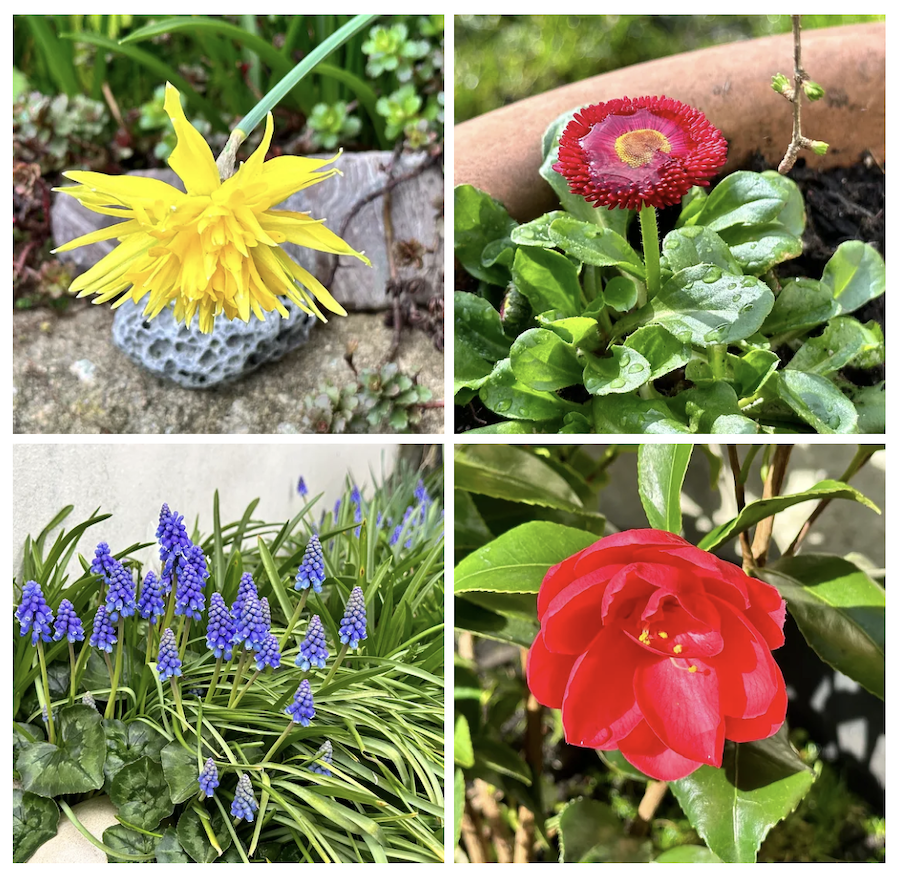
The cold is not the time to be lazy, I thought. Early springtime is perfect for preparations at home. I spend my morning coffee time enjoying the seedlings growing. In the case of peas, this happens pretty much in front of my eyes – here are their 24hrs of growth:
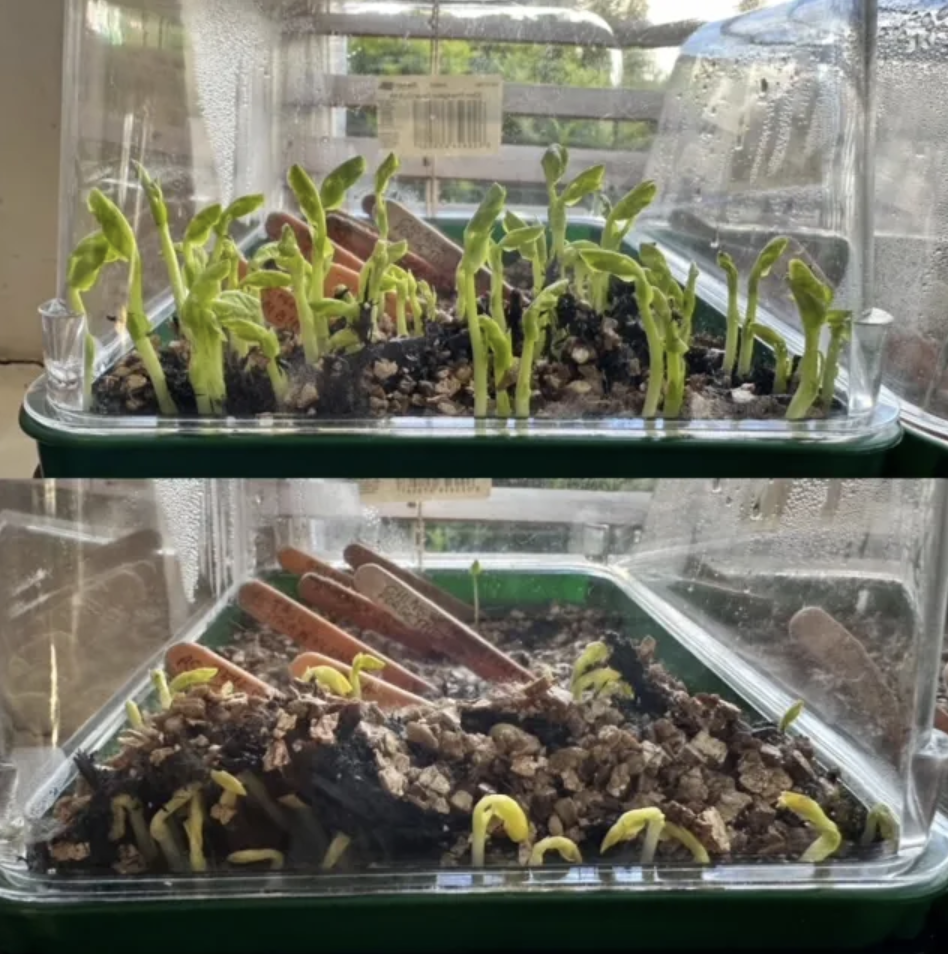
I am running a small experiment, too. I purchased two types of garlic: a bulb from Poland and one from China. To be fair, Easter-European shops sell closed garlic bulbs, while Asian stores seem to prefer the garlic that is already sprouting, so the competition is probably not fair, but what a win for an amateur gardener like me. I say “amateur” because the first batch I put aside a while ago did not start, and only an informative Instagram video taught me how to do it properly (peel the garlic and place it on a wet kitchen tower). Et voila! Two weeks of garlic growth:
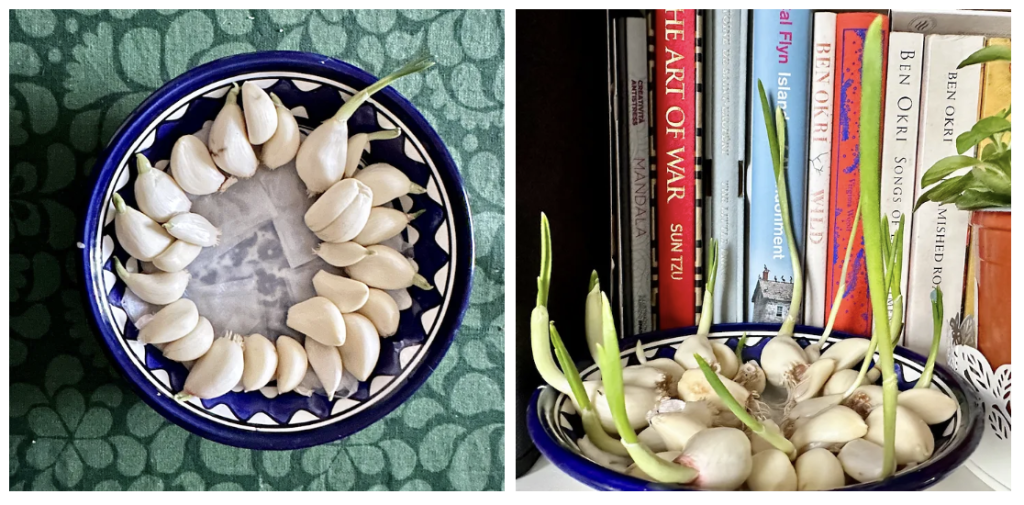
Gardening tasks are a great opportunity to think away from screens. Writing the article about cyberpsychology required a lot of consideration, as it summed up a lot of what I know about the subject in a relatively accessible way. So I needed a lot of time to think.
When it comes to any form of my writing, I apply my usual creative process: I think about the topics for a few days, write down key themes and only then start writing things up. Yes, I do think about my posts here in the week, of course. Then, the act of writing feels like channelling something that has already emerged, collected itself and aligned itself with externalising thoughts. It’s easier this way. So, when I need to think, I prefer to hand it over to my subconscious first while I occupy myself with unrelated tasks.
This time, I remembered I had a free seed packet template from the lovely people from the radical Real Seeds company in Wales (their goal is to sell seeds and educate clients on how to re-grow plans themselves liberating us from the limitations of the mainstream market). So I spent a few hours cutting, folding, glueing, writing and filling up self-made seed packets with my pond papyrus seeds.
Doing things with paper, scissors, glue and other stationery tends to wake up our inner child, and that activates our playfulness, intuition and joy. Sitting immersed in a repetitive activity activates mindfulness. Doing something creative and fun immerses us in the state of flow – we are energised, uplifted, and so immersed that we forget the sense of time. Exactly what the doctor prescribed to step away from cognitive academic thinking or challenging times. It’s soothing and comforting. Not to mention tangible results I can now share with friends:
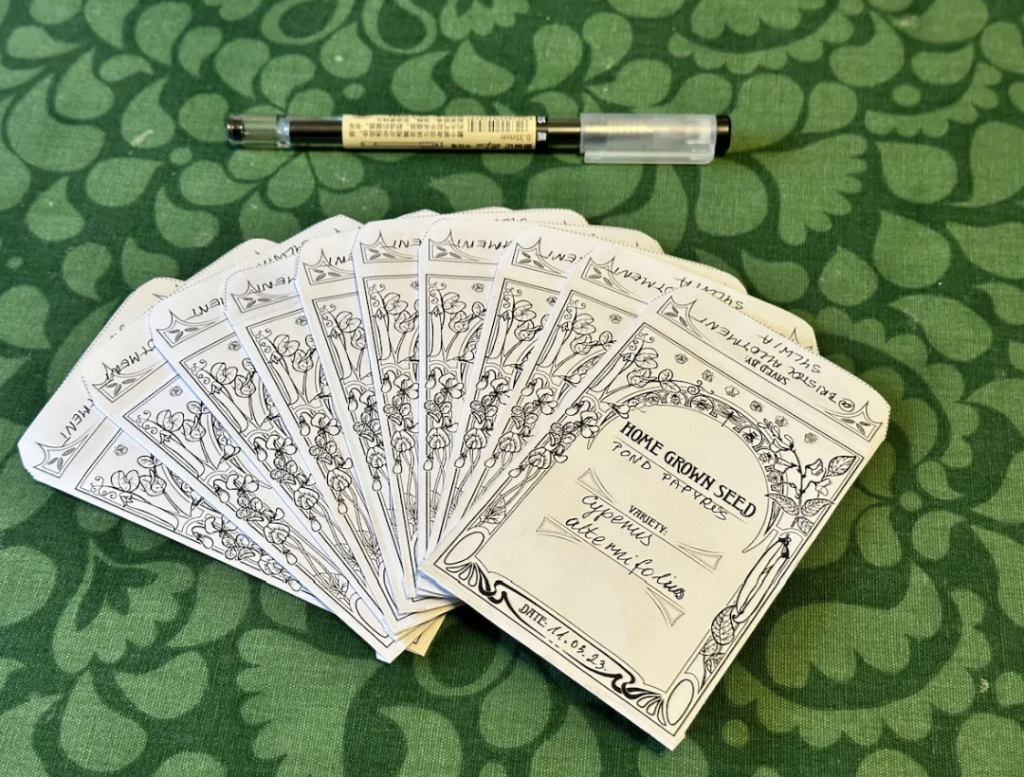
In the meantime, our lemon tree bloomed for the first time, developed another dozen small buds and showed signs of growth. One of her branches grew so well that it looks like it never was cut in the first place! The healing and resilience of Nature always astonish me. You have to look really closely to see the little bend where the entire branch was cut to fit the tree in the delivery box. I am so glad she is happy in our window.
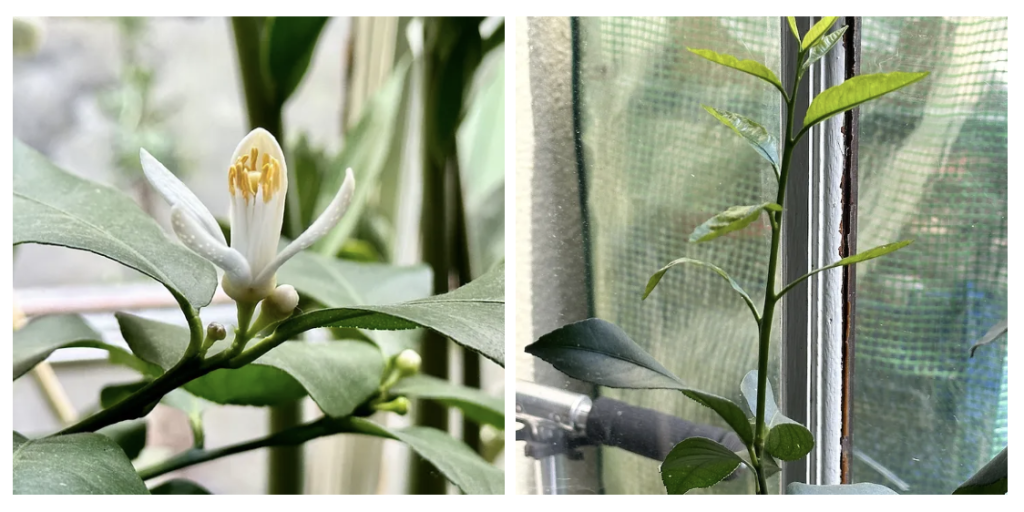
I used the colder days to connect with friends, too. One of my friends, now based in Estonia, sent me a lush present by post: a stamp set from the Finnish post featuring the magnificent photographic work of Kreetta Järvenpää (I am a huge fan!). Sometimes, I feel the artistic take on Nature reminds us of its beauty, fragility and importance. I think Kretta’s word does exactly that.
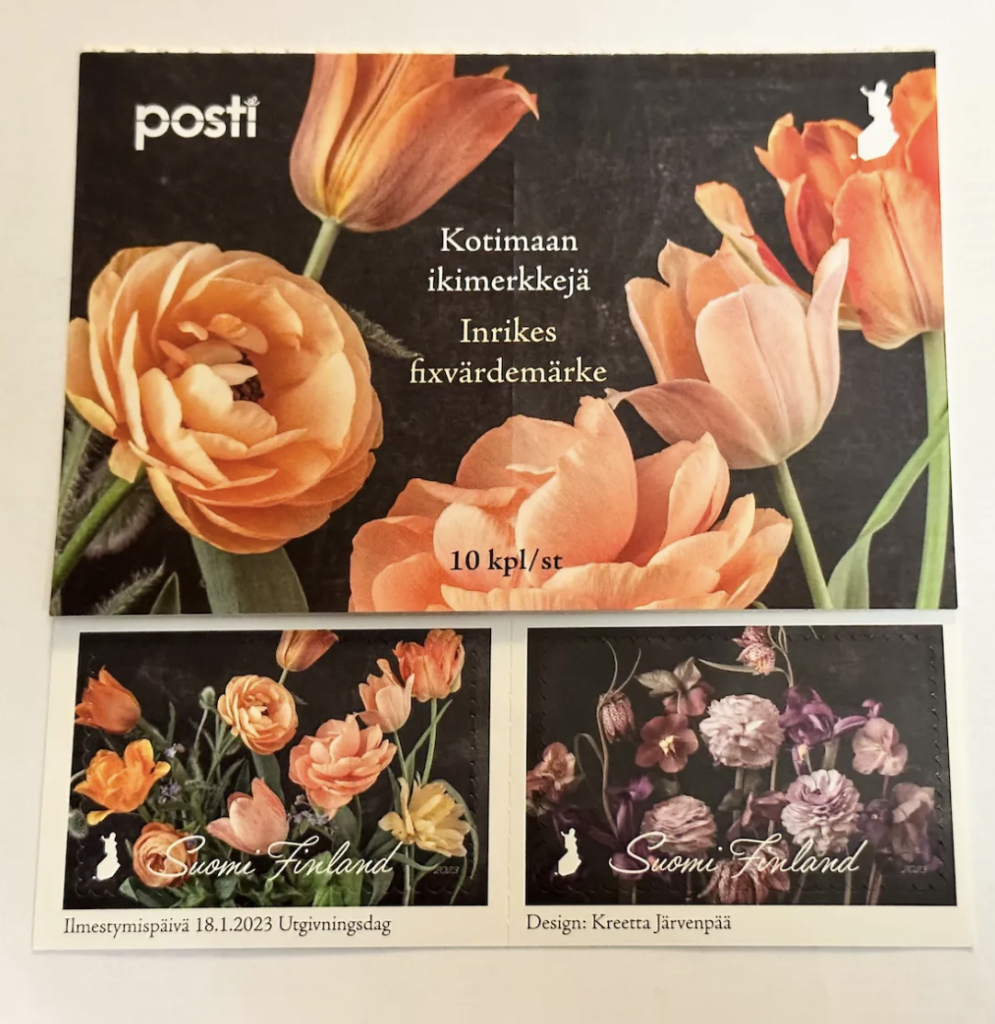
Another friend invited me for a walk with fellow Nature practitioners. I have recently joined a local network of eco therapists, so it was nice to meet some of them in person. Bristol is a stunning city for Nature lovers. Wherever you go, you are not far from the wilderness. And so we took a stroll in our local woodland while even the local pubs and restaurants displayed already waking up spring flowers and similarly themed street art. It was so lovely to connect with similarly-minded people.

I was also invited for a coffee and a walk around a beautiful garden centre with another friend. I love English garden centres. Even with the current stock limitations, going to one can be a very relaxing and informative experience. We were lucky, though, as they clearly just had a delivery, and shelves were full of spring blooms. I spotted Japanese camellia blooms up close – I have recently added one of those to our garden collection, but we may need to wait at least a year to see those glorious flowers. I fell in love with dark purple muscari and finally caved in: knowing that we are now working toward buying our own house, I can think about larger plants, so I purchased a blue hydrangea.
There are words in the languages I speak, and I speak a few, that my brain simply resists. Pronouncing “hydrangea” is one of those situations, so it was fun to listen to my friend (also a therapist) tap into the power of cognitive thinking and advise me to separate it into three words: “hi!” “brain” “ja!” And it works! I can now easily refer to the plant in my neighbour’s front garden by its name instead of calling it “the unpronounceable”. I love their stunning crowns, so it’s only polite to learn their name too.
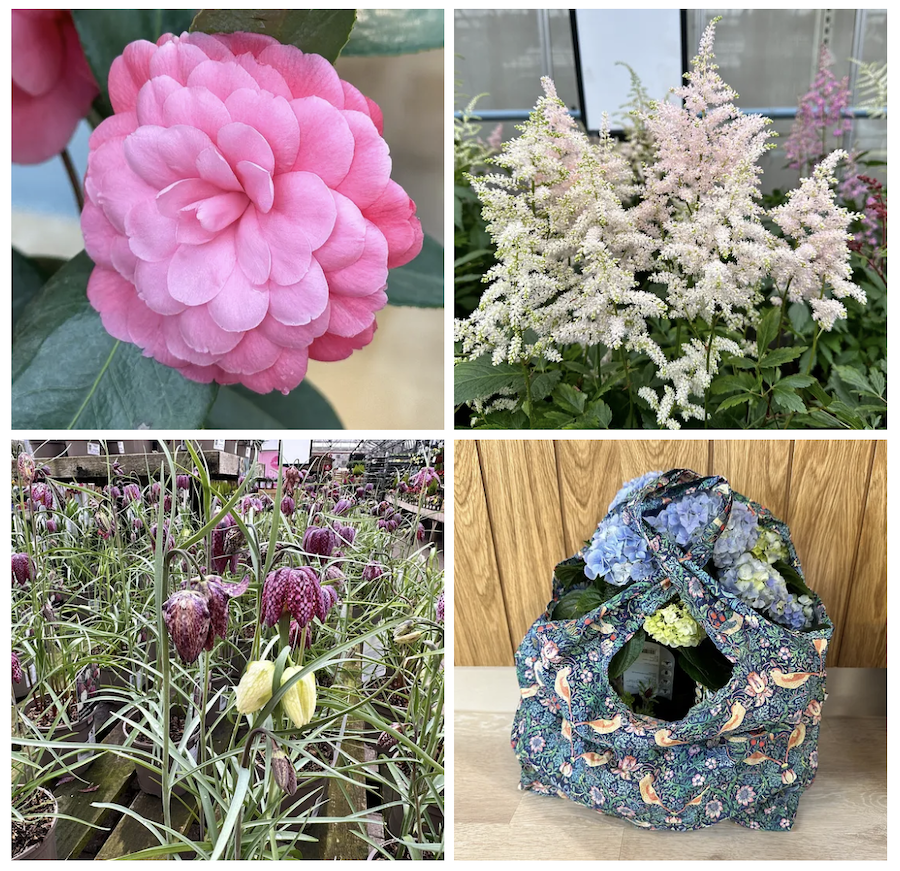
It feels like I did a lot to connect with Nature, but trust me – those were short moments during a fortnight of work on screens. That may be why, upon my return here, I want to remember the moments of Nature Connectedness for a good life balance.
Reflection:
Today, I encourage you to practice flow: that state of joyful, playful activity during which we simply forget the sense of time. You may need to decide on the time boundaries first – ask a friend to check on you, set up an alarm, or – if outdoors – watch the sun move across the skies. Remember to just do it and let go of worries – bring yourself to what you are doing “right here, right now”. Here are a few activities to consider:
Colouring – Johanna Basford has plenty of free downloadable sheets
Collaging – buy a few magazines with nice images, tear out or cut out your favourite and create a mood board or any other image on paper, and see what emerges
Gardening – start with one project but move between other tasks smoothly; there is no “should” or ‘ought”, just the joy of pottering around
Reading – chose a light topic to immerse yourself in reading; maybe think about a soothing, comforting posture in a place where you can feel the sun on your face
Playing games – you can play board games or online games; the mechanics and the underlying positive psychology of games help the immersion, and the collective nature of games improves our sense of belonging (although you can also play a game on your phone and enjoy it too).
(I am going to have to go, as I still have a few home gardening projects to finish off, and I need to start thinking about the allotment plants. I wish you a light Sunday!)
This post was originally posted on Substack in our Syl’s Liberation Psychologies Newsletter.

